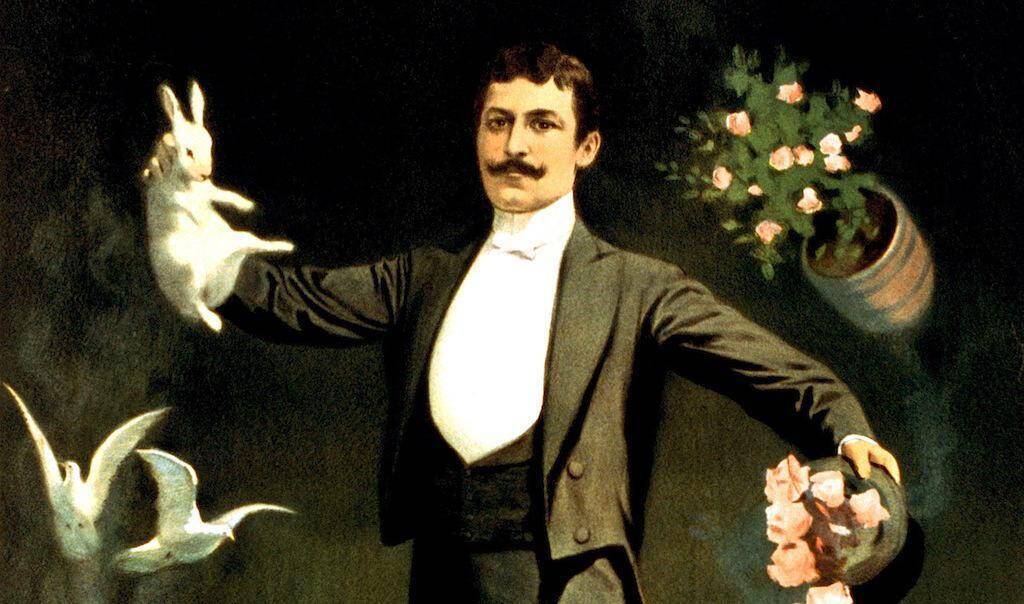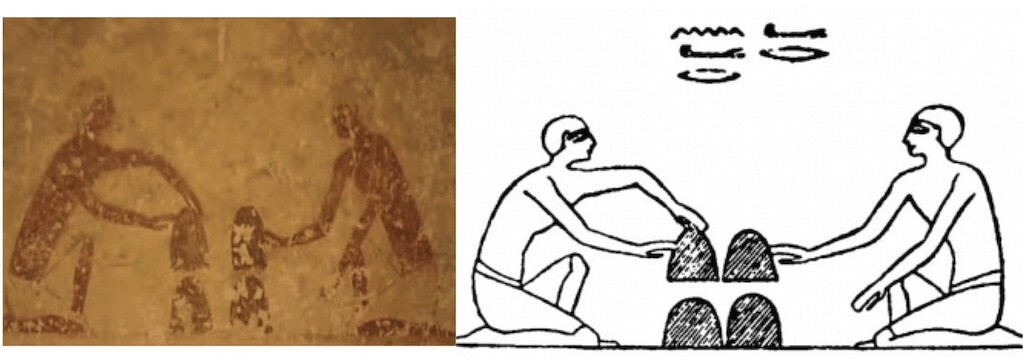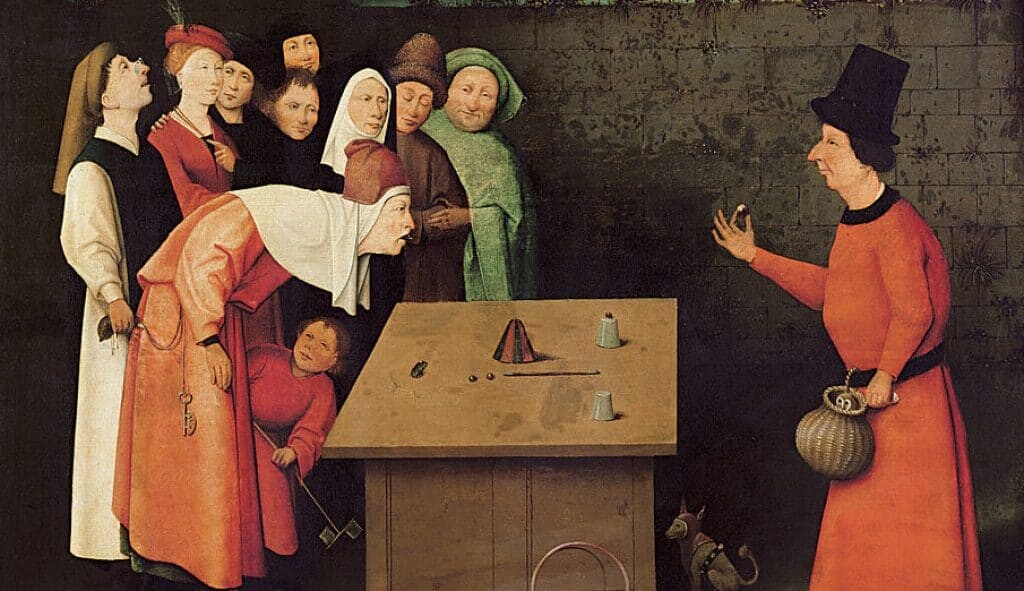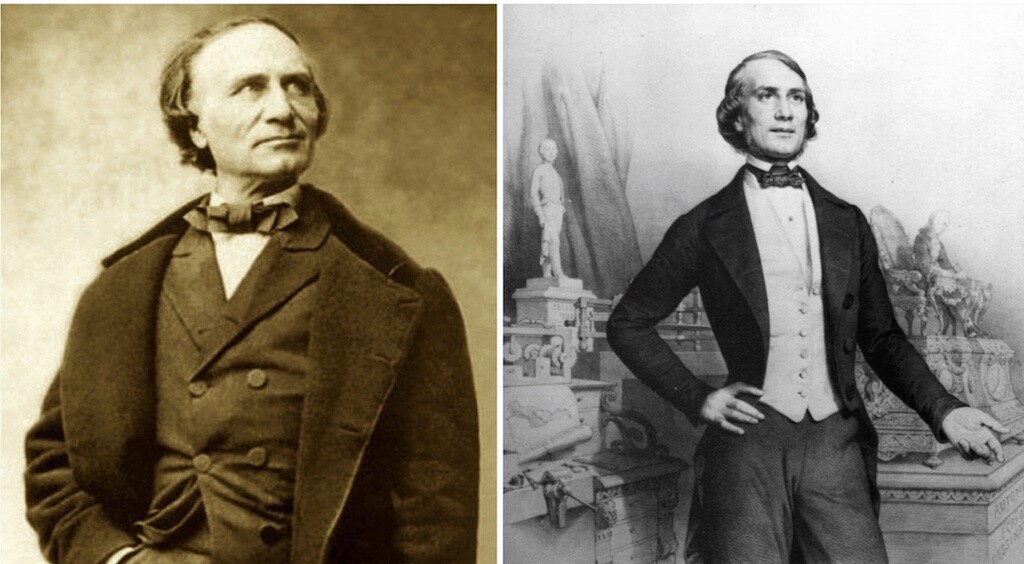Today’s magic shows are one of the most popular forms of entertainment. Practitioners such as David Copperfield, Cris Angel, and Dynamo perform the seemingly impossible with the flair and skill that make many people wonder ‘how did he do that?’ As we will discover, the history of magic has been a rollercoaster ride over the last 5000 years. In its earliest form, it inspired surprise and wonder, while at other times it was something dark and fearful. Beginning in the 19th century, thanks to a number of key figures, magic transformed from an unorthodox practice into an entertainment art form that, today, attracts millions of spectators.

Where Did Magic Start?
We are familiar with grand, large-scale magic performances requiring a great deal of preparation. One example of this is the elaborate disappearing act. However, even an illusion that begins with the phrase “pick a card, any card” has the potential to baffle, amaze, and inspire an audience member. In fact, ancient Egyptians depicted this type of illusion magic in literature and, possibly, tomb paintings, signifying that the history of magic started long ago.
Around 1823, the British adventurer, Henry Westcar, acquired an Egyptian literary papyrus (c. 2500 BCE) that portrays a magician named Dedi performing an animal decapitation trick for the king. In the story, Dedi magically replaces the severed heads and then makes a number of prophecies to the king. Although some experts believe that the tale is purely fictional, others point out that there are a number of Egyptian stories that describe magicians who also make prophecies.
Another possible example of a magic trick performed in Egypt is depicted in a painting from the tomb wall of Baqet III in the Beni Hasan cemetery from the 21st century BCE. In the painting, two men are sitting around a table with inverted bowls. Some people interpret this as the first Cup and Balls routine, while others point out that it may be some other type of game. The painting also depicts jugglers and other games and leisure activities.

Roman Acetabularii
The Acetabularii were a group of magicians that performed the Cup and Balls routine in ancient Rome for roughly 250 years starting around 50 CE. The name of this group originated from the original illusion in which they used stones and small vinegar cups. Toward the end of his life around 65 CE, Seneca the Younger of Rome comments about taking pleasure in the mystery of the cup and dice trick and also connects the sleight of hand to jugglers in his 45th Epistle to Lucilius:
[blockquote align=”none” author=”Seneca the Younger of Rome”]Such quibbles are just as harmlessly deceptive as the juggler’s cup and dice, in which it is the very trickery that pleases me. But show me how the trick is done, and I have lost my interest therein.[/blockquote]
Negative Perceptions in the History of Magic
For the following thousand years, magic had heavy links to the occult and witchcraft, and many people considered it the work of the devil. It ceased to be the form of innocent entertainment that it once was and became an increasingly rare spectacle. During these barren centuries, only a select few were able to perform their trade. Those in authority permitted street and circus performers to dazzle their audiences with traditional tricks that they deemed harmless.
In 1584, the Englishman Reginald Scott wrote The Discoverie of Witchcraft to show the world that there was no such thing as witchcraft. The book ended up doing more harm than good for magicians, though. Even though Scott exposed many secrets of the trade, the book also painted magicians as charlatans and tricksters. Thus, the negative image curtailed the art form even more. Despite the burning of most copies of the book in the early part of the 17th century, it would take another 50 years to repair some of the damage.

A Transition to Modern Magic
The French magician Jean Eugene Robert Houdin, also known as the “Father of Modern Magic,” was born in 1805 in the central French town of Blois and experienced perhaps the most serendipitous moment within the history of magic.
Intending to follow in his father’s clockmaking footsteps, the teenage Houdin saved money to buy a copy of Traite de l’horlogerie (Treatise on Clockmaking). Instead of the two volumes of clockmaking books, in error Houdin was sent a pair of books on magic. However, rather than return them, he started to read them and began to practice every waking moment.
Houdin could only learn so much from his new books, so he hired the services of a local magician in order to learn more. His mentor, Maous, was a doctor with a hobby of performing at fairs and parties. Maous taught Houdin all the fundamentals of magic, sleight of hand, and hand to eye coordination. Perhaps the greatest lesson that Houdin learned was that, with repetition, the necessary dexterity would follow. Had Houdin received his proper book purchase, then perhaps he would not have been instrumental in bringing magic to the theatre venue. Additionally, he could not have inspired such great successors such as Harry Houdini, the master of escape tricks who named himself after Houdin.

The Magic Circle
Interest in magic began to increase once more during the latter part of the 19th century. Magicians were inventing new tricks, and audiences were willing to pay a fee once again to see the shows. One summer day in 1905, a group of about 20 magicians met up in Pinoli’s Restaurant in Central London. They wanted to found a brand new magic club. Among this group was arguably one of Britain’s greatest magicians of all time, David Devant. The group initially considered a club named in honor of a recently deceased magician called Martin Chapender, but they eventually decided to call their group The Magic Circle.
The club held its very first meeting in a pub called the Green Man in Soho, but later they usually met in the upstairs room of St. George’s Hall at Langham Place. Devant became the Club’s inaugural President, and his catchphrase “All done with kindness” appeared on their publicity posters. Memberships grew worldwide, and the leaders made another momentous decision in 1991 when they decided they would allow women into the club for the very first time if they meet the criteria.
The Elite Inner Club
Getting this far into the Circle sounds like an effort, but there is a club within the Club. This is known as the Inner Magic Circle, and membership of this order never exceeds 300. Like the basic membership of the Magic Circle, members can add a title after their name, “Member of the Inner Magic Circle (MIMC).” Getting into this even more exclusive club requires more than mere knowledge of magic; a high degree of ability is essential. Members take an oath never to reveal the most revered magic secrets. This mantra is foremost in the Circle’s motto Indocilis Privata Loqui, which means “not apt to disclose any secrets.” Any member caught in the act is immediately expelled from the Circle.
Influential TV Magicians
From the 1970s onward, magic became something of a fixture on television. UK based magicians David Nixon, Tommy Cooper, and Paul Daniels helped to alter the course of the history of magic by bringing magic and illusion into the homes of millions of viewers.
David Nixon
Nixon was always urbane and polite, and viewers described him as anyone’s grandfather with a passion for magic. Although he was a fantastic magician, his charming demeanor and articulate speaking voice also served him well as a narrator and voice-over artist. Unfortunately, in 1975, doctors diagnosed him with cancer. For three years he battled the disease before his heavy smoking finally took its toll.
Tommy Cooper
Tommy Cooper was, without doubt, one of the most recognizable magicians in the history of magic in the UK and perhaps in the world. This was due to the appearance of the man. He stood at 6’4” and rarely performed without his trademark red fez. As brilliant as he was with his magic, his fans loved him as a comedian. At the height of his fame in the 1970s, he was regularly on television in his own magic show.
While other magicians presented themselves as skilled and professional, Cooper used his awkward appearance to good effect. He pretended to be an amateur that someone was thrusting on stage to perform. Tricks regularly went wrong and Cooper usually had the expression that he could not believe what was happening around him. By the 1980s, Cooper’s fame had begun to wane due to increasing health problems. But in 1984, he received an invitation to a live variety show as a comeback. Sadly, halfway through his performance he suffered a massive heart attack and died.
Paul Daniels
Paul Daniels, who many people regarded as The Godfather of Magic, was another television-based magician who was popular during the 1980s. He was articulate and professional and was a great inspiration to many up and coming magicians. At the age of 11, Daniels caught the magic bug, and he passionately delved into the hobby that would later blossom into a lifelong career. After making his television debut in the talent show, Opportunity Knocks, in 1970, Daniels made sporadic appearances on TV. Producers were so impressed, they gave him his own show in 1979. It ran for 15 years and featured his assistant and future wife, Debbie McGee. In 1982, he was the very first non-American winner of Magician of the Year. His son from his first marriage, Martin, went on to follow in his father’s footsteps, and he too became a magician.
Divulger of Secrets
One of the most controversial of all magic shows ran for two seasons during 1997-1999. Fox’s production of Breaking the Magician’s Code outright exposed the long-held secrets of magic. A world-class magician would perform classic illusions such as the Zig Zag Lady, Catching a Bullet Between the Teeth, and Metamorphosis. Then he would explain just how magicians performed the trick.
He was known as the Masked Magician and never spoke on screen. A voice-over by Mitch Pillegi, of X-Files fame, would provide the explanations. The Magic Circle and its members were beside themselves when the first broadcasts were made. However, the Masked Magician turned into something of an icon of late 1990s television. In the last of the specials, the Masked Magician revealed his biggest secret – his true identity. Val Valentino was the man behind the mask. Interestingly, he insisted that he made the shows to re-ignite interest in magic.
Mystics to Entertainers
In the history of magic over the past several thousand years, the art transitioned from something mystical to something paranormal and fearful. Only relatively recently has it evolved into an art of wonder and skill. Today, magic transcends all universal barriers and appeals to everyone, not just children. When eager fans pay to attend a magic show, there is an expectation – a hope – that the magician is going to provide them with shock and awe. In the end, the razzle and dazzle of the best shows always leave us shaking our heads in disbelief.
You may also like:
Levitation
Ancient Mystical Order of the Rosicrucians
References:
The Middle Ages
Darren Bridger
The Magic Circle